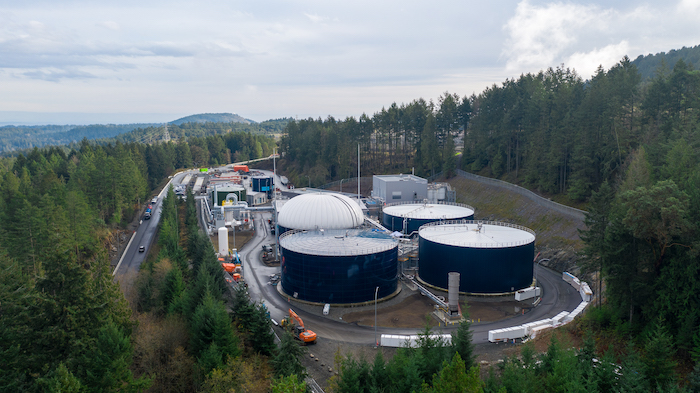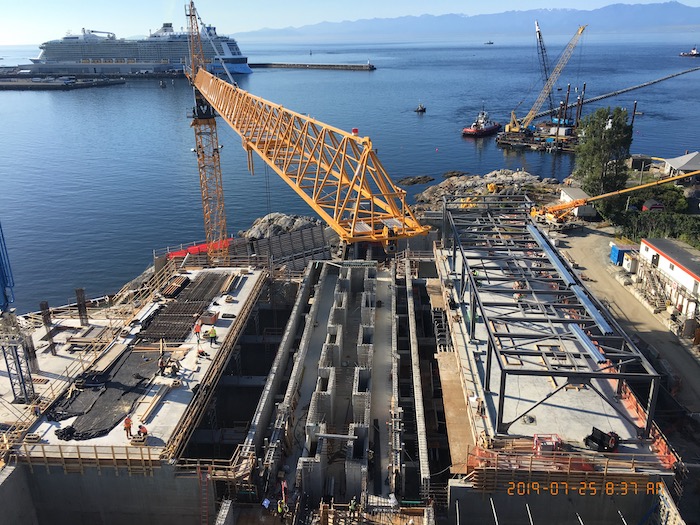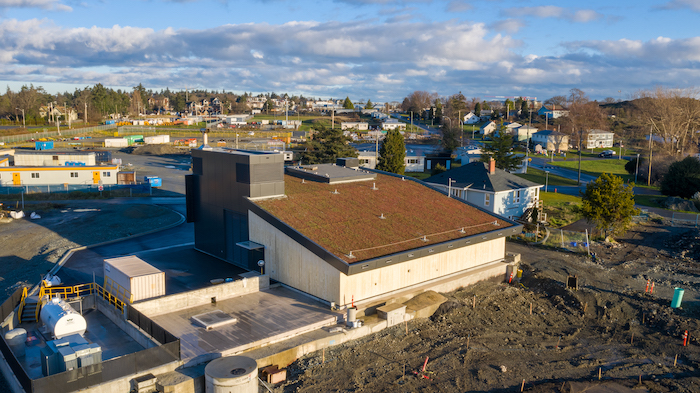
2021 #CCEawards Showcase: Capital Regional District Wastewater Treatment Project
November 28, 2021
By CCE
“Notable for innovation, delivery and resource recovery—and the hybrid delivery model delivered the best value, saving $425 million!” - Jury
Category: Project Management
Award of Excellence Winner: Stantec
When British Columbia’s Capital Regional District (CRD) embarked on an ambitious effort to plan, construct and commission a new 108 ML/d tertiary treatment facility to serve Greater Victoria, one of Canada’s fastest-growing communities, it engaged Stantec to provide technical and owner’s engineer services.
In preparing to deliver nine major capital projects under the program, the largest in CRD’s history, Stantec developed innovative solutions and used a hybrid procurement model, completing construction in just four years, on time and on budget—a significant achievement for a major, complex wastewater treatment program.
Reducing capital costs
More than 10 years ago, to meet new federal regulations, CRD initiated a major wastewater treatment program. Stantec came on board as program manager in 2009. For the following five years, work focused on project definition, technical planning, siting, options analysis, and funding business case applications, alongside procurement analysis and public consultation. In 2016, the project was ready to go with a strong business case and procurement commenced.
As part of an integrated program management team with CRD, Stantec served as the owner’s engineer for the procurement, construction management and commissioning of the new facilities. Its team completed the project definition report for the new wastewater treatment plant and undertook an extensive value engineering and economic review of options to reduce the project’s capital cost.
Stantec’s indicative design resulted in cost savings of $425 million over previously developed concepts. The options evaluation process included triple bottom line evaluations, financial evaluations, extensive consultation with stakeholders and numerous workshops with CRD staff and politicians.

The Hartlands Residuals Treatment Facility in Saanich, B.C., was completed under a public-private partnership (P3) model.
The hybrid delivery model
Stantec worked with CRD to assess options using environmental, social, financial and risk criteria. This evaluation process, along with a value for money (VFM) assessment, quantitative risk allocation and risk exposure analysis, resulted in the selection of hybrid delivery, combining several procurement and project delivery models.
Each selected procurement model was chosen to address risk transfer, schedules, local market conditions and costs:
- McLoughlin Point Tertiary Treatment Plant: Design-build-finance.
- Hartland Residuals Treatment Facility: Public-private partnership (P3).
- Macaulay and Clover Pump Stations: Design-build.
- Arbutus Attenuation Tank: Design-bid-build.
- Trent Forcemain: Design-bid-build.
- Clover Forcemain: Design-bid-build.
- East Coast Interceptor: Design-bid-build.
- Residuals Pipeline and Pumping Stations: Design-bid-build.
The McLoughlin Point plant was constructed on a small site of only 1.5 ha, so high-rate, low-footprint processes had to be used. Its wastewater treatment process uses high-rate primary clarifiers, a moving bed biofilm reactor (MBBR), biological aerated filters and tertiary disc filtration. Residuals are pumped 20 km with a lift of 152 m to the Hartland Residuals Treatment Facility.
The Hartland facility treats biosolids to a Class A standard, using anaerobic digesters and a fluidized bed dryer. Biogas recovered from the digestion process is used to heat the digesters and run the dryer, which produces pellets suitable for cement kiln fuel and other beneficial uses.
Achieving goals
CRD had three key goals for the wastewater treatment program:
- To comply with federal regulations for secondary treatment by December 31, 2020, to protect the marine environment.
- To minimize capital and life-cycle costs to CRD residents and businesses and enhance local communities with an efficient system.
- To optimize resource recovery from the water treatment process and minimize greenhouse gas (GHG) emissions.
Providing tertiary treatment, the McLoughlin Point plant exceeds the first requirement and was operational ahead of the deadline. Typically, using traditional delivery models for a project of this nature could take around seven years; but the procurement and construction of plant took only four years.
The project protects the sensitive marine environment adjacent to Victoria, which is home to orca, salmon, sea lions and other diverse life.
As for the second goal, the facilities were delivered for $775 million, in line with the estimated budget prepared by Stantec and, as mentioned, $425 million lower than earlier concepts prepared by others.
And regarding the third goal, the project produces a high-quality effluent suitable for reuse, including irrigation; heat recovery from effluent at the plant can enable district heating; and the aforementioned biosolids are used as cement kiln fuel.
CRD went beyond the basic regulatory requirement for secondary treatment and constructed tertiary treatment facilities, demonstrating their leadership in protecting the environment.
From high-rate treatment processes that take little space, to pumping and lifting residuals up 150 m to the Hartland biosolids facility, to drilling a major forcemain sewer horizontally under Victoria harbour, the project team devised innovative solutions to reduce program costs.
CDR’s wastewater rates are amongst the lowest in Canada. This project contributes to a more sustainable process and improves the quality of life for more than 300,000 residents, leaving a legacy that will serve Greater Victoria for the next 100 years.
Capital Regional District Wastewater Treatment Project, Victoria, B.C.
Award-winning firm (project manager/owner’s engineer): Stantec, Surrey, B.C. (Reno Fiorante, P.Eng.; Bob Dawson, P.Eng.; Rob Simm, P.Eng.; Stan Spencer, P.Eng.; Andrew Buchner, P.Eng.; Jon Bell, P. Eng.; Al Ghanam, P.Eng.; Jeff Ball, P. Eng.; Sean Lockhart, P.Eng.; Uthaya Uthayakumar, P.Eng.; Enrico Dimzon; David Harding, AIBC; Margaret Huggan).
Owner: Capital Regional District.
Other key players: n/a.

